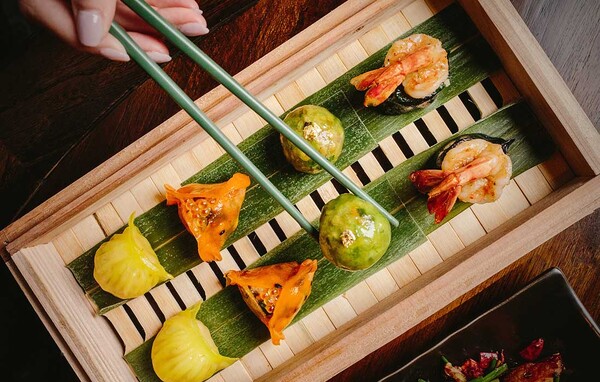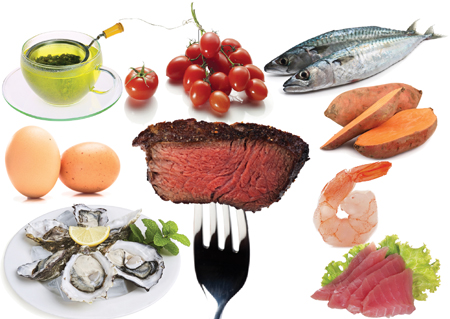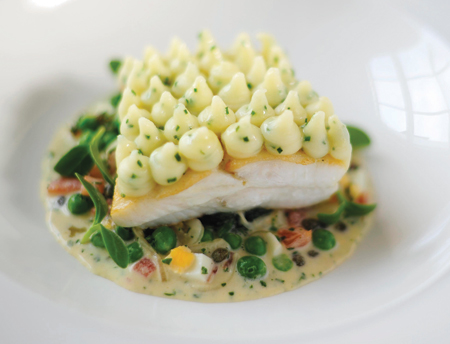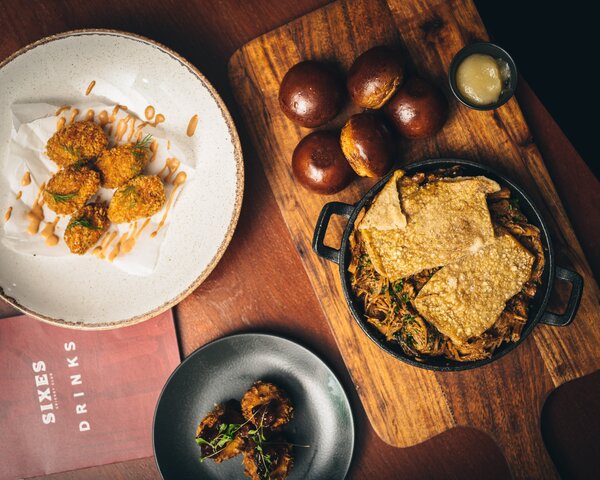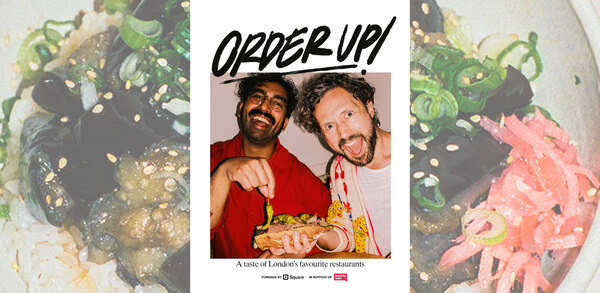Umami: unlocking the fifth taste
Umami, the enigmatic fifth taste, is a rich, meaty flavour and a catalyst that unlocks and defines the deliciousness in certain savoury foods. Kerstin Kühn investigates how it can be created through specific flavour combinations, and chefs share their best umami-rich recipes
About 3,000 years ago, Greek philosophers came up with the concept of our four elemental tastes: sweet, salty, sour and bitter. Their theory remained intact right up until the early 20th century, when a scientist in Japan discovered a fifth taste: umami. But unlike the traditional four tastes, umami is a bit more complicated.
"Simply, umami is the deliciousness or savouriness of food," says Trevor Blyth, a former Roux Scholar and chef-proprietor of the White Fox in Tokyo. "Scientifically, it is the taste imparted from all foods that contain glutamate, guanylate and inosinate. And metaphorically, umami can be viewed as the dark matter of flavour; the difficult-to-describe element that holds all other tastes together."
In Japan, people have for years used dashi, an umami-rich stock made from kombu (kelp), to elicit the best flavour from food. The concept of umami has been recognised in the East for a long time, but only over the past decade or so has umami started to play an increasingly important role in the West, too. Top chefs such as David Chang and Heston Blumenthal have been working with umami for years to balance and enhance their dishes.
"It's something very close to my heart," Blumenthal has said, using his research into umami not only at his three-Michelin-starred Fat Duck restaurant in Bray, but also to design in-flight menus for British Airways and develop umami-rich dishes for hospital patients to encourage the elderly to eat more.
But even in the mainstream, umami is starting to make waves as more and more restaurants are incorporating it into their menus. In California, burger chain Umami has used a secret sauce to maximise the umami taste experience and make punters crave their $12 burgers, while closer to home, Hawksmoor has designed its entire menu around umami, with its Longhorn kimchi burger providing the ultimate umami hit. "Umami is important because it plays a strong supporting role which helps to unify flavours," says executive chef Richard Turner.
Yet umami remains a taste that is difficult to explain, although we all know it when we taste it. "Umami has a mild but lasting aftertaste that is difficult to describe," says Nobuyuki Matsuhisa, chef-proprietor of Nobu and Matsuhisa restaurants.
"It induces salivation and a sensation of furriness on the tongue, and it stimulates the throat and the roof and the back of the mouth. Umami is palatable and has a long-lasting taste."
Ultimately, umami is what makes our favourite savoury dishes taste so delicious. It's rich, earthy, meaty and savoury. It's why the Japanese cook with dashi, why the French use stocks and truffles, why Italians love Parmesan and tomatoes, and why we Brits like to add a splash of Worcestershire sauce to our food. It may not be sweet, salty, sour or bitter, but it's the taste that makes our mouths water.
THE HISTORY OF UMAMI
As far back as 3,000 years ago, Greeks and Romans used a condiment called garum â" a fermented fish sauce â" unwittingly boosting the umami in their foods. In 1825, in his famous treatise The Physiology of Taste, French gastronome Jean Anthelme Brillat-Savarin established the word âosmasomeâ for rich, meaty tastes, which has since been considered a forerunner of umami. And in the late 1800s, fellow Frenchman Auguste Escoffier incorporated veal stock into his cooking to intensify the flavour of certain sauces as well as their mouth-feel and texture.
But it wasnât until 1908 that a scientific explanation of umami was established when Japanese chemist Kikunae Ikeda at the University of Tokyo tried to extract the distinctive taste of dashi. He discovered it was
glutamate â" a type of amino acid â" and coined the term umami, which was derived from the Japanese word umai, meaning savoury or delicious. Following his discovery, Ikeda went on to invent monosodium glutamate or MSG â" perhaps the most infamous three-letter word in the history of food (see below).
However, it took the world of science nearly 80 years to acknowledge Ikedaâs finding and only in 1985, at the Umami International Symposium held in Hawaii, was umami finally recognised as a distinct taste separate from that of sweet, salty, sour or bitter.Â
In 2000, scientists at the University of Miami discovered the existence of a specific taste receptor responsible for umami, while in 2009 a study published in the American Journal of Clinical Nutrition found that certain genes play a role in how sensitive we are to it.
THE SCIENCE OF UMAMI
Glutamate is one of 20 non-essential amino acids, a structural element of protein, which occurs naturally in many foods, but particularly in asparagus, seaweed and tomatoes.
Following Ikedaâs discovery, further research revealed that in addition to glutamate, umami is also imparted by DNA building blocks called ribonucleotides, which also occur naturally in many foods, particularly in meat and fish (inosinate) and in mushrooms (guanylate).
Although the ribonucleotides give off some umami on their own, more importantly, they magnify the umami taste of foods rich in glutamate. What this means is that the key to umami is the combination of ingredients high in glutamate with ingredients that have ribonucleotides, as the resulting umami taste is way more intense than that of the ingredients on their own.Â
âUmami is part of the taste of food and it has a synergistic effect on other umami-rich foods,â explains Blyth. âCombine asparagus (glutamate) with bacon (inosinate) and mushrooms (guanylate) and the umami taste in all of the ingredients will be intensified.â
HOW TO UNLEASH UMAMI
While glutamate is found in many natural foods, certain cooking methods further enhance umami as they help to increase the level of amino acids and this can be achieved in a number of different ways. Cooking boosts umami in savoury foods such as meat, which isnât umami when itâs raw as it is the cooking process that releases the glutamate. Similarly, curing meat or fish results in the breakdown of amino acids, which not only helps to preserve the meat, but also increases umami.Â
Fermentation frees the umami in things like soy sauce or kimchi, while ageing cheeses or drying mushrooms has a similar effect. Combining foods rich in glutamate and ribonucleotides is the key to unleashing umami, which is why age-old combinations such as Parmesan and tomatoes in pizza or kombu and katsuobushi in dashi are so popular. The umami taste can also be enhanced by condiments such as fish sauce or soya sauce to season a dish before serving or at the table.
However, just like with the other four tastes, balance is key, as too much umami can be overpowering. âUmami should be used with caution â" itâs easy to overdo and bludgeon the tastebuds, which is okay for a few bites, but fatiguing over several courses,â says Turner.
**UMAMI-RICH FOODS
**Seafood
Kombu
Seaweed
Katsuobushi/dried
bonito flakes
Niboshi/dried
sardines
Bonito
Mackerel
Sea bream
Tuna
Cod
Prawns
Squid
Oysters
Shellfish
Meat
Beef
Pork
Chicken
Vegetables
Tomatoes
Shiitake mushrooms
Enokitake mushrooms
Truffles
Soy beans
Potatoes
Sweet potatoes
Chinese cabbage
Carrots
Others
Parmesan cheese
Green tea
Soy sauce
Oyster sauce
Lea & Perrins sauce
Marmite
Henâs eggs
DETAILS SUPPLIED BY THE UMAMI INFORMATION CENTER
**CHEFSâ TOP UMAMI BOOSTERS
**Kombu â" it has very little flavour, but it imparts a huge umami taste and is very versatile.
Trevor Blyth, chef proprietor, the White Fox, Tokyo
Marmite is high in glutamate and we mix it into butter. We then brush this lightly onto cooked fish, just before plating. It gives a real hit of seasoning without adding salt.
Sat Bains, chef-proprietor, Restaurant Sat Bains, Nottingham
Iâm a big fan of Kikkoman Soy Sauce and use it in both savoury and sweet dishes, such as soy compressed apple tarte tartin. My tip is to put a few drops into base stocks to bring out and intensify the flavour while reducing.
Simon Hulstone, chef-proprietor, The Elephant, Torquay
Parmigiano Reggiano is an incredible ingredient, especially considering the transformation that takes place in the ageing process. Why do so many people add grated Parmigiano cheese to their food? Because it enhances the flavour.
Massimo Bottura, chef-proprietor, Osteria Francescana, Modena
Anchovy or bacon are both umami-rich ingredients that, when used judiciously, enhance simple grilled dishes.
Richard Turner, executive chef, Hawksmoor, London
We use a lot of fish oils, kelps and mushrooms in our burgers. For me, umami is what makes burgers crave-worthy.
Adam Fleischman, owner, Umami Burger
For a broth, such as the lamb broth we serve at Dinner, we use a high content of button mushrooms, shiitake mushrooms, a little bonito, rosemary and tarragon, and then season with white soy sauce and sherry vinegar for acidity and balance.
Ashley Palmer-Watts, executive chef, Dinner by Heston Blumenthal
**THE MSG MYTH
**After discovering umami, Japanese chemist Kikunae Ikeda patented a way to stabilise glutamate by mixing it with salt and water, creating what is now known as monosodium glutamate or MSG. He subsequently started to manufacture and sell MSG through his company, Ajinomoto (the essence of taste), which remains one of the worldâs biggest producers of MSG today.
Despite its chemical-sounding name, MSG is produced in a natural way: by fermenting starch, wheat or molasses. It has no distinct flavour on its own, but is used as an additive to bring out the umami taste of other foods.
The use of MSG grew popular around the world in the 1940s and 1950s, when it became synonymous with Chinese food and found its way into processed foods, snacks, canned soups and fast foods. But in 1968 the backlash started when a letter published in the New England Journal of Medicine described the symptoms of âChinese restaurant syndromeâ â" burning sensations, palpitations, chest pain, headaches, allergies, dehydration and anxiety â" and indicted MSG as the cause.
For decades afterwards, MSG became the leitmotif for unhealthy foods, with some researchers claiming it caused cancer, brain damage, heart problems and obesity. However, despite endless studies, nobody has proved that MSG is harmful. It has remained classified as a substance safe for public consumption since 1958.
More recently, MSG has started to shake its negative image slightly, not least thanks to celebrity chefs such as Heston Blumenthal, Grant Achatz and David Chang of New Yorkâs Momofuku, who have defended it as a flavour enhancer and dispelled the myth of it being a chemical that makes people sick.
âMSG is a salt attached to glutamate and itâs delicious,â Chang told the audience at the MAD Symposium in 2012. âItâs mind-boggling to me that there is still so much pushback from Western culture. The evidence overwhelmingly shows that MSG is not harmful to you.â
Baby spinach with grilled shrimp and dried red miso by Nobuyuki Matsuhisa
Serves 2
100g baby spinach leaves, washed and dried
4tsp yuzu juice or lemon juice
1tbs olive oil
1 handful fried leeks (white part shredded and deep-fried until golden)
1 heaped tablespoon freshly grated Parmesan cheese
2tsp dried miso
8 x 16/20 size grilled tiger prawns
Place the spinach in a mixing bowl and dress with the yuzu juice and olive oil, and then add the fried leeks, grated Parmesan and half the dried miso and mix.
 Place the mixed salad in the centre of a large serving dish and sprinkle the remaining dried miso over the top.
Arrange the grilled tiger prawns around the outside of the salad and serve.
**FURTHER READING
**Dashi and Umami: The Heart of Japanese Cuisine by Nobuyuki Matsuhisa and Heston Blumenthal
The Fifth Taste: Cooking with Umami by Anna and David Kasabian
Umami: Unlocking the Secrets of the Fifth Taste by Ole G Mouritsen and Klavs Styrbæk
Umami Information Center
www.umamiinfo.com
Fish pie with sauce tartare by Simon Hulstone
Serves 4
For the fish pie
50ml olive oil
4 x 150g sustainable fish (pollock, hake, coley
or grey mullet), skinned and trimmed into
nice rectangles
For the tartare sauce base
2kg mussels, well washed and drained
150ml PernodÂ
1/2 fennel, sliced thinly
25ml olive oil
3 shallots, peeled and sliced thinly
1 garlic clove, peeled and sliced thinly
100ml white wine
100ml double cream
To finish the tartare sauce
1 plum tomato, concassed into 0.5cm dice
2tbs blanched petits pois
1tsp washed Lilliput capers
6 cornichons, finely diced
2tsp finely diced shallotÂ
1/2 egg, hard boiled and grated finely on a Microplane
1tsp finely chopped parsleyÂ
1/2 lemon, zested and juiced
For the mashed potato
1kg Desiree, King Edward or Marfona potatoes (leave the skins on and just wash them well)
100ml double cream
50ml whole fat milk
50g unsalted butter
1 egg yolk
20g chives, chopped
1tsp grain mustard
In a large, non-stick frying pan on a medium to high heat, add your olive oil and the fish (presentation side down).Â
As soon as you have colour, remove the fish from the pan and lay on an oiled tray with the coloured side sitting on the tray. Leave in the fridge until needed.
To make the tartare sauce base, heat a large high-sided pan on a high heat. As soon as you can feel the heat from the pan, add the mussels, Pernod and fennel and cover with a lid. Once all the mussels have opened, pass the stock through a very fine sieve, and add a little water to swill out the pan and capture all the stock.
Discard the mussel meat and the shells, put the stock into a pan and reduce it by half. (This can vary depending on the quality of mussels and how much stock you have to begin with.) When the stock is reduced to 100-125ml, check the taste: if it is too salty, add a little water. Leave to one side when you are happy with it.Â
Heat a medium-sized pan on a medium heat, add the olive oil and sweat off the shallots and garlic. You donât want any colour. When they are cooked, add the white wine, reduce to a syrup and then add the mussel stock, cream and reduce until it has a sauce consistency. Put everything into a blender and blitz until smooth. Pass through a chinoise, check the taste and consistency and refrigerate until required.
To prepare the tartare sauce, warm 6-8tbs tartare sauce base for four people. Add all the other ingredients, making sure it is hot. Be careful not to break up the garnish and ensure there is enough sauce to coat all the ingredients.
To make the mash, bake the potatoes with the skins on in a preheated oven at 180°C. Bring the cream, milk and butter up to the boil, and then remove from the heat. Once the potatoes are tender, remove the flesh, pass it through a drum sieve twice, and discard the skins.
Bring the cream mix back up to the boil. Put the hot potato into a pan and incorporate the hot cream mix. You donât want it too wet and it needs to support its own weight. Season, add the egg yolk, chopped chives and grain mustard, put into a piping bag and keep hot, ready to serve.
Finish cooking the fish, either for six minutes in a pan, or briefly in the oven at 180°C, until hot. Pipe the hot mashed potato onto the fish and glaze. To serve, place a portion of the sauce tartare in a deep bowl and top with the fish.
Braised pork and vegetables, hachio miso sauce by Trevor Blyth
Serves 4
For the dashi 10g rishiri kombu
1 litre cold water
10g albacore maguro bushi
50g hachio miso paste
100ml mirin
50ml soy
For the pork 1 onion, finely diced
2 garlic cloves, finely diced
20g ginger, finely diced
? white radish, peeled and cut into four
thick slices
2 carrots, peeled and cut into eight thick chunks
1 salsify, cut into eight pieces
50ml sesame oil
1 small bunch coriander. Chop the leaf and
tie the root into a bundle
1kg pork belly, cut into four equal-sized pieces
50g lotus root, cut into eight thin slices,
blanched and refreshed
8 young peas, blanched, refreshed and split
In a saucepan, soak the kombu in the cold water for one hour, then bring the water to a gentle simmer. Remove the kombu, add the maguro bushi and remove the saucepan from the heat. Leave to infuse for five minutes and then pass the dashi through a fine strainer.
Stir the miso paste into the dashi until it has fully dissolved, and add the mirin and soy.
In another saucepan, sweat the onion, garlic, ginger, radish, carrots and salsify in a little sesame oil and then add the coriander root.
Heat the rest of the sesame oil in a frying pan and sear the pieces of pork on all sides. Place the pork in the saucepan with the vegetables and pour in the miso dashi. Cover with a cartouche, bring to the boil and simmer gently until soft
and tender. Discard the coriander root.
To serve, add the sliced lotus root, peas and chopped coriander to the saucepan to warm in the sauce. Divide the vegetables between four serving bowls, place a piece of pork in each
and pour over the sauce.
Â
Â
**Kimchi from Hawksmoor at Home
**Â
1 medium Chinese leaf cabbage
10g Maldon sea salt
75g caster sugar
10 garlic cloves, finely chopped
10 slices of peeled, fresh ginger, finely chopped
50g Korean chilli powder
50g tinned anchovies, drained and chopped
50ml light soy sauce
50g jarred salted shrimp
100g spring onion, cut into 2cm batons
100g carrots, cut into fine, short strips
Remove the outer leaves from the cabbage, cut it in half lengthwise, then cut the halves across into 2cm wide pieces.Â
Toss the cabbage in a bowl with the Maldon sea salt and 15g of the sugar. Cover and leave overnight in the fridge.
Put the garlic, ginger, Korean chilli powder, anchovies, soy sauce, shrimp and the remaining sugar in a blender with 50ml water. Whizz the mixture to a smooth paste, then stir in the spring onions and carrots.
Rinse the cabbage thoroughly in cold water, drain well, and combine with the paste.

